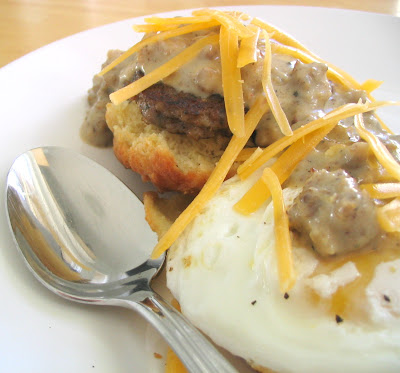This photo has been sitting in my Flickr for a while now so it's about time I post the recipe. I have a weak spot for extra cheesy dishes and this one has a whopping 1:1 ratio of pasta to mozzarella. The best part is how each scoop pulls away never-ending tendrils of gooey, melty cheese.
A note:
Leave the pasta boil the pasta two minutes short of al dente because it will finish cooking in the oven. If you boil it to al dente, it will overcook in the oven.
Italian Sausage and Mozzarella Pasta Bake
serves 3 - 4
8 oz. pasta (penne, cellantani, farfalle, campanelle)
2 Italian sausages, removed from casings
1 small onion, finely chopped
2 garlic cloves, minced or pressed
1/4 C red wine
1 14oz. can diced tomatoes, drained
1 8 oz. can tomato sauce
1 tsp Italian herb mix
1/8 tsp sugar
Salt and pepper to taste
2 tsp olive oil
8 oz. mozzarella, cut into 1/2 inch cubes (preferably fresh mozzarella)
1/4 C grated Parmesan
Preheat the oven to 400 degrees F. Bring a pot of water to a rolling boil and boil the pasta to 2 minutes short of the recommended time.
Meanwhile, heat a teaspoon of olive oil in a large saucepan or Dutch oven over medium heat. Add the Italian sausage and break into bite size pieces. When the sausage has browned, remove and set aside. Add the onion and some salt and pepper, and cook over medium heat until the onions have softened, then add the Italian sausage back in. Add the minced garlic and cook until fragrant, about 30 seconds. Add 1/4 C red wine and cook until almost evaporated. Add the drained diced tomatoes, tomato sauce, and herbs, and a little sugar to taste. Simmer until slightly thickened, about 5 minutes. Season with salt and pepper.
Add the pasta to the sauce and toss to combine. Add half of the mozzarella and mix it into the pasta. Transfer to a 2 quart baking dish. Top with the remaining half of mozzerella cubes and grated Parmesan. Bake until bubbly and lightly browned, about 10 to 15 minutes.



